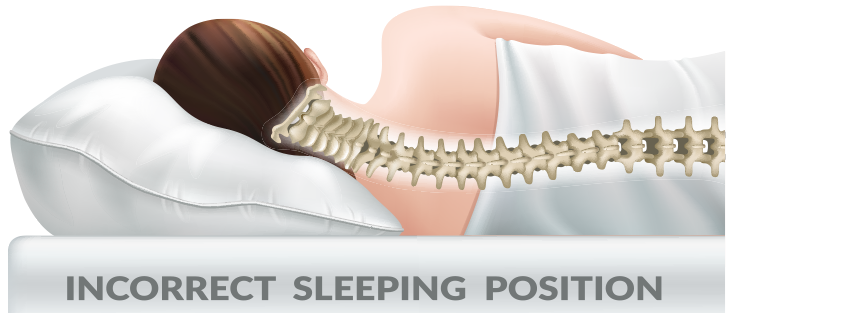Memory foam mattresses have surged in popularity, often lauded for their ability to contour to the body, offering unparalleled comfort and support. However, a pertinent question arises: Can a memory foam mattress actually cause body aches? This inquiry prompts a deeper exploration, revealing the intricate relationship between sleep surfaces, individual body types, and the resultant impact on physical well-being.
The Science of Memory Foam
Memory foam, or viscoelastic foam, was originally developed by NASA for space shuttles to mitigate the g-forces experienced during takeoff. Its unique combination of softness and support allows it to adapt to the sleeper’s shape, promising the ultimate sleeping experience. However, this malleability, while beneficial for many, can also lead to complications for others. The crux of the dilemma lies in how well the mattress accommodates diverse body types and sleeping positions.
Understanding Body Aches
Body aches manifest for numerous reasons, from poor posture to underlying medical conditions. In terms of sleep, the quality of the mattress plays a crucial role. An improperly supportive surface might exacerbate pre-existing pain or lead to new aches, significantly affecting one’s overall well-being. A seemingly innocent night of sleep can culminate in discomfort, a phenomenon many have experienced.
Finding the Right Fit
One of the central tenets of healthful sleep is ensuring that the mattress aligns with the sleeper’s body type and sleeping position. A mattress that is too soft can cause the torso to sink excessively, resulting in poor spinal alignment. Conversely, a mattress that is too firm may not allow for adequate pressure relief, particularly at sensitive points like the shoulders and hips. Therefore, the quest for the perfect balance becomes paramount.
Weight Distribution and Memory Foam
Weight distribution is another critical element. Memory foam mattresses are designed to distribute weight evenly, but individuals with higher body mass might find that the foam compresses too much, leading to a lack of support. This can manifest as pain in areas not adequately supported by the material’s contouring abilities. For example, side sleepers, who require more cushioning at their pressure points, may find traditional memory foam lacking if it doesn’t provide sufficient buoyancy.
The Role of Sleeping Position
Sleeping position plays an integral role in determining whether a memory foam mattress will enhance or detract from sleep quality. Back sleepers need firm lumbar support to maintain the natural curvature of the spine; excessive sagging can create misalignment and result in discomfort. Conversely, stomach sleepers require a more rigid surface to prevent their lower backs from sinking too far, which memory foam may not always facilitate. Side sleepers find themselves at the intersection of these requirements, balancing the need for cushion at the hips and shoulders with the necessity of support.
Temperature Sensitivity and Comfort Levels
Memory foam mattresses inherently have a tendency to retain heat due to their dense composition. While this can create a luxuriant cocooning effect, it may also lead to discomfort, particularly for those who run hot during sleep. Excessive warmth can disturb sleep quality, leading to tossing and turning, which might be misconstrued as the mattress itself causing body aches. Finding a temperature-neutral memory foam or one with cooling properties can be a transformative adjustment for those struggling with temperature regulation.
Personal Factors
While the mattress plays a significant role in sleep comfort, personal factors cannot be overlooked. Previous injuries, chronic pain conditions, and even psychological stress can all contribute to how one experiences sleep. The expectations and perceptions of the sleeper can also affect their comfort; if one approaches bedtime with pre-existing anxiety about potential discomfort, their ability to relax and find comfort diminishes. Cognitive factors intertwining with physical experiences create a complex tapestry of the sleep experience.
Transitioning to a New Mattress
Transitioning to a memory foam mattress can also introduce challenges. The initial adjustment period may be accompanied by discomfort as the body acclimates to the new material. This transition can last anywhere from a few days to several weeks. During this period, it is essential to allow the body time to adapt and to monitor changes in comfort levels closely. If pain persists beyond this point, it may be a sign that the mattress isn’t the right fit.
Expert Recommendations
When contemplating a memory foam mattress, consulting with a healthcare professional or sleep specialist can provide invaluable insights tailored to individual needs. Keeping in mind personal preferences, body weight, and sleep position, finding the right mattress type could mitigate the potential for aches significantly.
Conclusion
The question of whether memory foam mattresses cause body aches is complex and multifaceted, rooted deeply in individual needs and experiences. The promise of comfort and support is enticing, but it is essential to recognize that not all mattresses suit every body. Engaging in thoughtful consideration of personal requirements, along with a willingness to experiment, may lead to the ultimate dreamscape—a soothing sleep environment free from the burdens of body aches.
